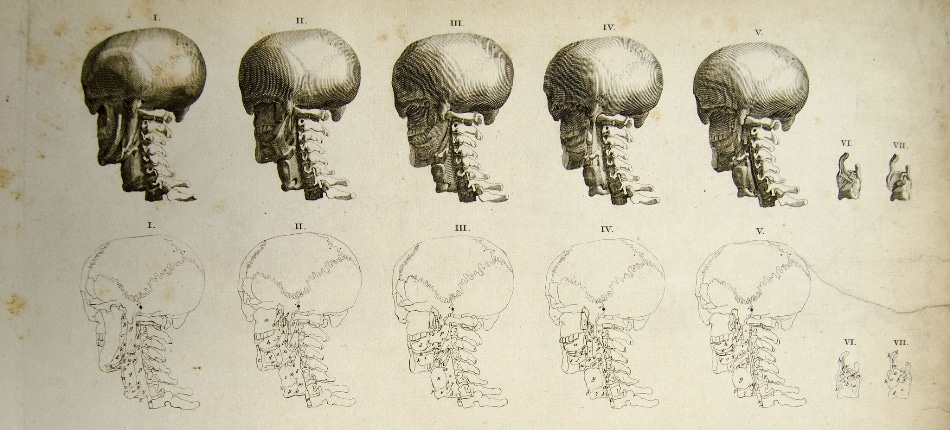Mar 8 2017
New research from the Department of Mechanical Engineering at McGill University in Canada demonstrates how interlocking jigsaw shapes can strengthen 3D printable materials. The material focus is on brittle polymers such as ABS.
 The suture junctions of a human skull can be clearly seen in this anatomical drawing (wiggling lines on the bottom set of sketches.) From Bernhard Siegfried Albinus, Tables of the skeleton and muscles of the human body. (Credit: The University of Liverpool Faculty of Health & Life Sciences, liverpoolhls on Flickr)
The suture junctions of a human skull can be clearly seen in this anatomical drawing (wiggling lines on the bottom set of sketches.) From Bernhard Siegfried Albinus, Tables of the skeleton and muscles of the human body. (Credit: The University of Liverpool Faculty of Health & Life Sciences, liverpoolhls on Flickr)
The research takes inspiration from the naturally occurring structure of the human skull, tortoise shells, fish spines, woodpecker beaks and ammonites. The common factor is that all share the same sutured structure, where bone fuses along a fine line.
Sutured materials in theory
The strength of sutured materials is in the complementary arrangement of stiff “building blocks” alongside weaker interfaces. The authors explain,
These interfaces are as important as the building blocks and fulfill critical structural functions: They deflect and channel cracks into toughening configurations, they enable large deformations, and they provide deformation hardening to spread energy dissipative mechanisms throughout large volumes of the materials.
In other words, the weaker interfaces are useful for dispersing stresses to the bone.
To understand the behaviour of interlocking sutured parts, the researchers studied the friction of jigsaw pieces pulled apart, and the angle at which they connect with one another. These results were then used to 3D print proof-of-concept puzzle pieces in ABS.
3D printing complementary structures
A Micro HiRes DLP 3D printer from EnvisionTEC was used to print the ABS pieces.
By pulling the jigsaw pieces apart with brute-force, experiments found,
The stiffness, strength, maximum elongation and energy absorption all increased with interlocking angle as predicted by the models. Sutures with interlocking angle of 20° fractured prematurely, with cracks emanating from the edges of the contact region
Using paraffin to lubricate the sutures then showed between 2 and 2.7 times improvement to the stiffness, strength and energy absorption of the puzzle pieces. The conclusions drawn show promising results for 3D printed jigsaw-reinforcement and future work may address, “the nonlinear responses of sutures are particularly attractive to augment the properties and functionalities of inherently brittle materials such as ceramics and glasses. toughened ceramics and glass.”
Researchers at MIT are also using 3D printing to draft possible structures of three-dimensional graphene. The gyroid shape under investigation at MIT is also believed to be the key to naturally reflective color of butterfly wings.
Bio-inspired “Jigsaw”-like interlocking sutures: Modeling, optimization, 3D printing and testing, is co-authored by I.A. Malik , M. Mirkhalaf and F. Barthelat. It is published in Journal of the Mechanics and Physics of Solids, 2017.
For regular updates on the latest 3D printing research, sign up to the 3D Printing Industry newsletter and follow our active social media channels. Also let us know your thoughts research in the comments below.
Featured image shows a turtle hiding in its shell. Photo by Matthew Peoples, leftymgp on Flickr